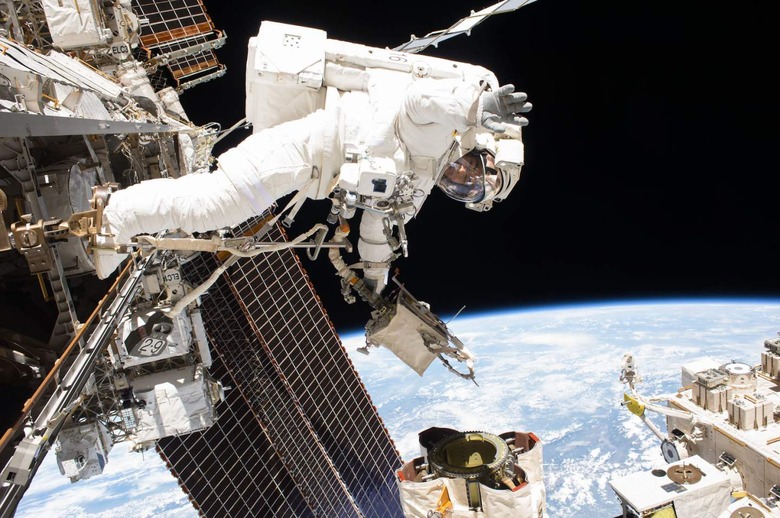NASA Scrubs ISS Spacewalk After Astronaut "Medical Issue"
NASA has scrubbed plans for the spacewalk outside of the International Space Station this week, after a medical issue with one of the astronauts. The spacewalk was to take place in collaboration with JAXA, Japan's space agency, on Tuesday, August 24, as those onboard the ISS continue to prepare it for a new solar installation.
Had the mission gone to plan, Astronauts Mark Vande Hei of NASA and Akihiko Hoshide of the Japan Aerospace Exploration Agency (JAXA) would have exited the ISS via the US Quest airlock on Tuesday morning. NASA had scheduled the start of the spacewalk for 8:30am EDT: that's when the pair would have set their spacesuits to battery power, signifying that they were no longer reliant on the space station's environmental support.
The goal was to prepare the ISS for the third Roll-Out Solar Array (ROSA), as NASA upgrades the power source for the station. The first pair of solar arrays was deployed all the way back in December 2000, and has been operating for more than two decades continuously. That's despite having been designed, initially, for a 15 year service life.
At the moment they're still functioning well, NASA says, but the aging panels are showing inevitable signs of degradation. As a result, it's been working on upgrading them, adding new ROSA-based panels. While smaller than the originals, they're more efficient, and when all installed NASA says they'll deliver a 20- to 30-percent increase in power on the station.

Each array requires two spacewalks for its installation. First, the astronauts need to prepare the worksite where they'll be installed, positioned in front of six of the current arrays, and using the existing sun tracking, power distribution, and channelization infrastructure. A second spacewalk then sees the arrays actually installed. The first array was installed in June.
Tuesday's mission was to see the site prepped for the third set of arrays, but today NASA said that Vande Hei has experienced "a minor medical issue." Though "not a medical emergency," it's enough to postpone the spacewalk.
"The spacewalk is not time-sensitive and crew members are continuing to move forward with other station work and activities," NASA said in a statement. "Teams are assessing the next available opportunity to conduct the spacewalk following the SpaceX CRS-23 cargo resupply launch planned for Aug. 28 and upcoming Russian spacewalks."
Boeing is producing the new solar arrays, and the panels are being transported in pairs to the ISS onboard SpaceX Dragon cargo spacecraft. Each new array is actable of generating over 20 kilowatts of electricity, for a total of 120 kilowatts. NASA first tested the ROSA design back in June 2017.
